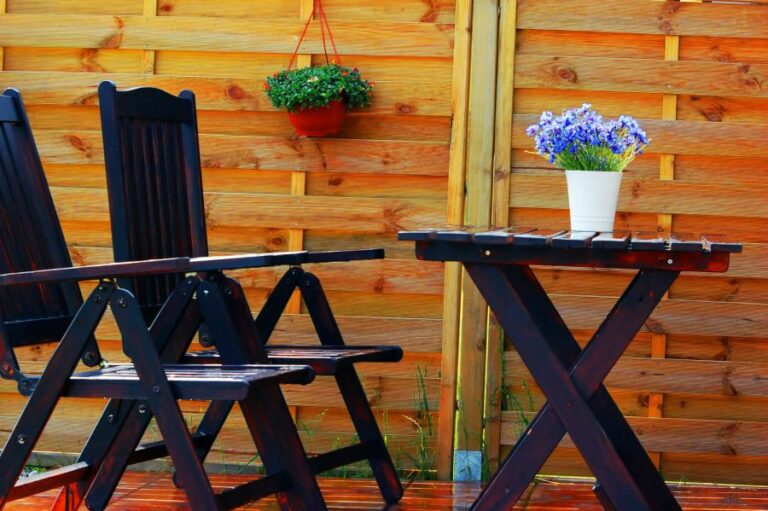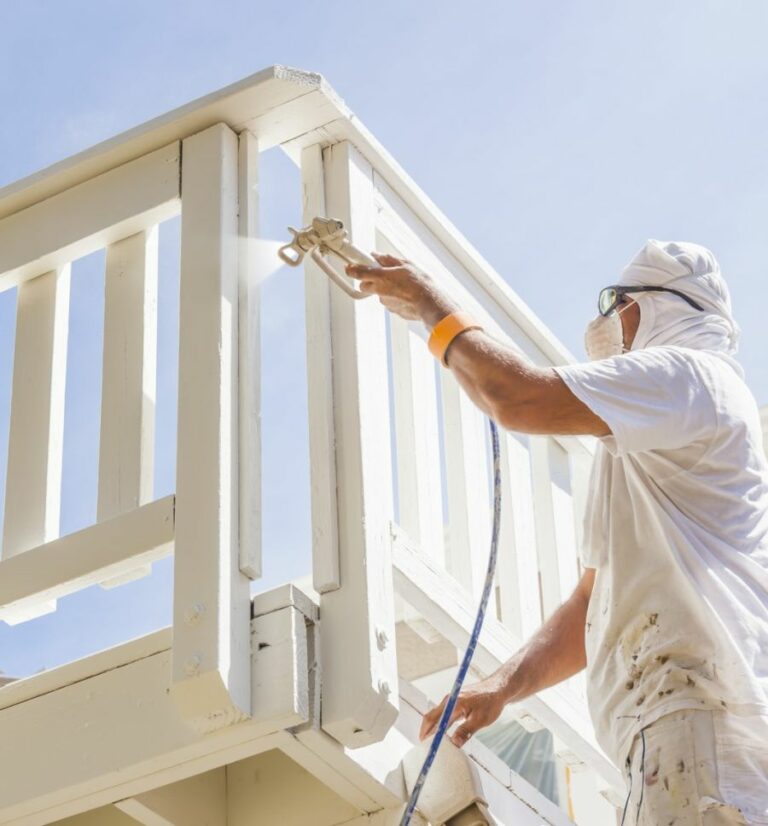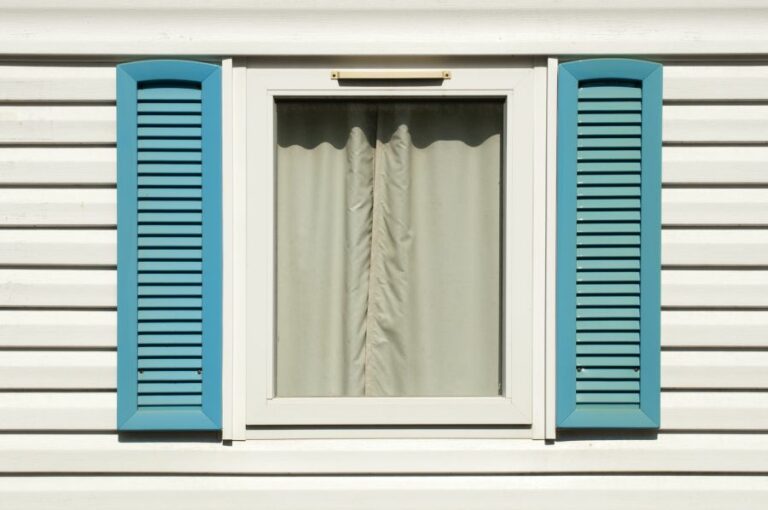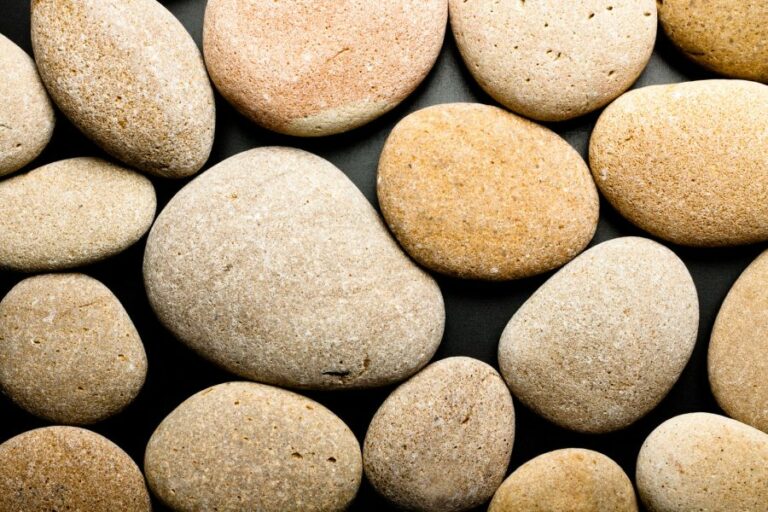Transform Your Home with Outdoor Window Painting
Let’s get creative and bring some life to your windows! This blog post will guide you through the fascinating world of outdoor window paint and trending decoration concepts for your home or business. We will provide expert tips on selecting the perfect paint, exploring various application techniques, and showcasing inspiring designs.
Outdoor window paint:
Outdoor window paint, also known as window chalk or liquid chalk, is designed for glass surfaces and comes in two main types: water- and oil-based. Water-based paint is more popular due to its easy clean-up and eco-friendliness, while oil-based paint offers better durability.
Choosing the right paint depends on the purpose, durability, ease of application, and cleaning. To apply, clean the surface, use appropriate brushes and rollers, work in light layers with drying time in between, and clean up with appropriate solutions. High-quality paint, considering weather conditions, and testing on inconspicuous areas are essential for successful outdoor window painting.

Discover the magic of outdoor window paint! Let’s explore the types of paint, application techniques, and inspiring ideas to transform your windows into vibrant, eye-catching works of art. Let your creativity flow and enhance your exterior space effortlessly!
Contents
- 1 Exterior Window Paint for Outdoor Use
- 2 What is the Optimal Type of Paint to Utilize for Exterior Windows?
- 3 What Type of Paint is Suitable for Exterior Windows?
- 4 Is it Possible to Paint Outdoor Windows?
- 5 Which Type of Paint Finish is Suitable for Exterior Window Frames?
Exterior Window Paint for Outdoor Use
• Introduction: What is Outdoor Window Paint?
Outdoor window paint, also known as window chalk or liquid chalk, is a type of paint specifically designed for use on glass surfaces such as windows, storefronts, or any area where one would want to create a bright and attention-grabbing design.
These paints are perfect for businesses looking to advertise a special promotion or event or for individuals looking to add fun and creativity to their front window display.
• Types of Outdoor Window Paint
There are two main types of outdoor window paints – water-based and oil-based. However, water-based paints are more popular due to their easy clean-up and environmental friendliness. Let’s take a closer look at each type:
– Water-Based Window Paints
Water-based window paints comprise pigment, water, and a binding agent. They are fast-drying, easy to apply, and easily cleaned with water. These paints are also non-toxic and environmentally friendly, making them popular among individuals and businesses.
Pros of Water-Based Paints:
- Easy clean-up
- Fast-drying
- Non-toxic
- Environmentally friendly
Cons of Water-Based Paints:
- Can be less durable than oil-based paints
- May not adhere well to certain surfaces
– Oil-Based Window Paints
Oil-based window paints contain oil as a binding agent, giving them a longer drying time than water-based paints. They are more durable and less likely to smudge, but they can be harder to clean up and may contain harmful chemicals.
Pros of Oil-Based Paints:
- More durable than water-based paints
- Less likely to smudge
Cons of Oil-Based Paints:
- Harder to clean up
- Longer drying time
- May contain harmful chemicals
• How to Choose the Right Outdoor Window Paint
When choosing outdoor window paint, you should consider the following factors:
– Purpose
First and foremost, determine what you plan to use the paint for. If you’re a business owner looking to create promotional signage or window displays, you’ll want a paint that is durable, weather-resistant, and easily visible from a distance.
If you want to make creative designs on your windows, you might prefer paint that is easy to apply and clean up.
– Durability
Depending on the intended use of your window paint, you may require a more durable and weather-resistant option. Oil-based paints generally provide better durability and resistance to the elements.
However, water-based paints might be the better choice if you want an easy-to-clean option.
– Application and Clean-Up
If you need paint that is easy to apply and clean up, water-based paints are your best option. They dry quickly and can be easily removed with just soap and water. On the other hand, oil-based paints tend to have longer drying times and require specific cleaning solutions or solvents for proper removal.
• Applying Outdoor Window Paint
To get the best results when applying outdoor window paint, follow these simple steps:
- Clean the surface: Before applying the paint, thoroughly clean the surface you’ll be working on. Use glass cleaner and a microfiber cloth to remove dirt, grease, or grime from the glass. Allow the surface to dry completely before moving on to the next step.
- Choose the right tools: Select the appropriate brushes, rollers, or sponges to apply the paint to the desired surface. Smaller brushes are suitable for more detailed designs, while larger brushes or rollers are better for covering larger areas.
- Apply the paint: When applying the paint, work in light layers, allowing each layer to dry before adding another. This will help you achieve the desired opaqueness, reduce smudging and increase the longevity of the design.
- Allow to dry: Once you’ve finished applying the paint, allow it to dry completely before subjecting it to outside elements such as rain or direct sunlight. Drying time can vary depending on the type of paint used and the thickness of the layers applied.
- Clean up: After the paint has dried, clean up any drips, spills, or other messes using appropriate cleaning solutions. For water-based paints, you can use soap and water. For oil-based paints, you may need to use a specific cleaning solvent.
• Tips and Tricks for Using Outdoor Window Paint
Here are some expert tips and tricks to ensure the successful use of outdoor window paint:
- Choose high-quality paint that is specifically designed for outdoor window use. Cheaper alternatives may not adhere well to the surface or offer adequate durability.
- Consider the weather in your area when selecting outdoor window paint. Water-based paints may not hold up well in areas with high humidity or heavy rainfall.
- It’s always best to test the paint on a small, inconspicuous area before applying it to the entire window. This will help you determine how the paint adheres to the surface and allow you to practice your design before committing to the full project.
- To create neat, clean lines in your design, use painter’s tape to mask off areas before applying the paint.
• Conclusion
Outdoor window paint can be an excellent way to add color, creativity, and visibility to your windows. By choosing the right type of paint, properly preparing the surface, and following the application steps, you can create bold and eye-catching designs that will grab attention and make a lasting impression.
Whether you’re a business owner looking to promote an event or someone looking to express their creativity, outdoor window paint is a versatile and fun option to consider.
What is the Optimal Type of Paint to Utilize for Exterior Windows?
Painting the exterior windows of your home is a crucial aspect of home maintenance. It makes your property look fresh and visually appealing and protects your windows from external factors such as exposure to sunlight, rain, and other atmospheric conditions.
I will explore the best paint to use on outside windows and other essential factors to consider for a successful painting project.
• Key Factors in Choosing the Right Paint
Before diving into specific paint types, it is essential to understand the key factors contributing to the perfect paint choice for outside windows. These factors include the paint’s adhesion capabilities, durability, color retention, and ease of application.
– Adhesion
A paint with excellent adhesion properties sticks well to the window’s surface without peeling or cracking over time. This is particularly crucial for windows exposed to harsh weather conditions, ensuring they remain protected and maintain their appearance.
– Durability
The durability of the paint is crucial, as it determines how long the paint job will last before requiring touch-ups or a complete re-paint. High-quality paints resistant to fading, chipping, and cracking are ideal for exterior windows.
– Color Retention
Color retention is the paint’s ability to maintain its original pigment and color. This is vital for outside windows, as exposure to sunlight can cause colors to fade over time, leading to a loss of vibrancy and visual appeal.
– Ease of Application
Lastly, choose the paint that is easy to apply and dries quickly. This will save time in the painting process and ensure a smooth, even finish on your windows.
• Best Paint Types for Outside Windows
Now that we understand the key factors in choosing the right paint let’s look at the best paint types for exterior windows.
– Acrylic Latex Paint
Acrylic latex paint is the most popular choice for painting outside windows, and for a good reason. It has excellent adhesion, durability, and color retention and is simple to apply.
Acrylic latex paint is water-based, meaning it is easy to clean up, dries quickly, and has minimal odor. Additionally, it is resistant to blistering, peeling, and cracking even upon exposure to harsh weather conditions.
I recommend choosing high-quality acrylic latex paint from a reputable brand to ensure the best results on your outside windows.
– Oil-Based Paint
Oil-based paint is another popular choice for outside windows due to its high durability, excellent adhesion, and color retention properties. However, it is essential to note that oil-based paint takes longer to dry than acrylic latex paint and has a strong odor.
If you use oil-based paint, be prepared for a longer drying time and ensure proper ventilation during the application process.
– Enamel Paint
Enamel paint is a hard, glossy paint known for its long-lasting durability and resistance to wear and tear. It is available in both water-based and oil-based formulations, with water-based enamels being the more eco-friendly and easier-to-clean option.
Enamel paint provides a smooth, glossy finish, making it an attractive choice for outside windows. However, please note that it can be slightly more challenging to apply than other paint types and may require multiple coats to achieve a uniform and smooth appearance.
• Surface Preparation Tips
To achieve the best results when painting outside windows, follow these surface preparation tips:
- Clean the windows thoroughly, removing any dirt, dust, or debris from the surface.
- Remove any old, peeling paint from the window frame and sand the surface for a smooth and even finish.
- Apply a coat of primer to the window frame, allowing it to dry fully before applying the paint.
• Painting Techniques for Outside Windows
- Use a high-quality brush to ensure a smooth and even application of paint.
- Apply multiple thin coats of paint rather than a single, thick layer. This will result in a better finish and added protection.
- When painting window sashes, start with the top and work your way down, ensuring the paint does not pool or drip.
- Allow each coat of paint to dry fully before applying the next.
In conclusion, the best paint to use on outside windows is high-quality acrylic latex paint, which offers excellent adhesion, durability, color retention, and ease of application. Oil-based paint and enamel paint are suitable alternatives if used correctly.
Proper surface preparation and painting techniques will ensure your outside windows remain protected, visually appealing, and long-lasting.
Paint Type | Advantages | Disadvantages |
|---|---|---|
Acrylic Latex | Water-based, easy to clean, excellent adhesion, UV-resistant, durable | May require a primer, and can be sensitive to temperature and humidity during application |
Oil-based | Suitable for metal windows, tough finish, smooth appearance | Strong fumes, slow drying time, harder to clean up |
Exterior Alkyd | Self-leveling, excellent adhesion, moisture-resistant | Higher VOC content, longer drying time, requires mineral spirits for cleanup |
What Type of Paint is Suitable for Exterior Windows?
When painting outside windows, the right choice can make all the difference in aesthetics, longevity, and protection against harsh outdoor elements. I will discuss the best types of paint for exterior windows, factors to consider when choosing paint, and tips for a successful painting project.
By the end of this guide, you should clearly understand how to select the right paint for your outside windows.
• Use Exterior Grade Paint
Exterior grade paint is designed to withstand varying weather conditions, providing resilience against fading, peeling, and cracking. These paints are typically acrylic-based, offering superior adhesion, durability, and resistance to moisture, UV rays, and temperature fluctuations.
– Top Choices for Exterior Window Paint
There are a few standout choices when it comes to external window paints. Here are some top options, all of which provide great overall performance.
- Latex-Based Paint: Latex paint is a popular choice for exterior windows because it is easy to work with and offers excellent adhesion, durability, and resistance to fading and chalking. It also dries quickly and is easy to clean up. There are two types of latex paints: 100% acrylic and vinyl-acrylic. For the best performance, go for 100% acrylic paint, which provides superior durability and weather resistance.
- Oil-Based Paint: Although oil-based paints have been largely replaced by latex in recent years, they still have certain properties that make them great for wood windows. Oil-based paint is particularly effective at preventing the wood from absorbing moisture, which prevents warping and rot. It also gives wood windows a rich, glossy finish that many homeowners find appealing.
- Alkyd Paint: Alkyd paint is an oil-based paint modified with alkyd resins, giving it a faster drying time and improved durability compared to conventional oil-based paints. It is an excellent choice for exterior wood windows due to its great adhesion and resistance to moisture and UV rays.
• Consider the Window Material
The material of your window frames will heavily influence your choice of paint. Here’s a quick guide for each common window material type.
– Wood Windows
As previously mentioned, oil-based or alkyd paints work best on wood windows due to their ability to prevent moisture absorption. Using a 100% acrylic formula is important for the best performance when choosing a latex-based paint.
– Metal Windows
For metal windows, it is crucial to use a paint specially formulated for metal surfaces, such as an acrylic-based paint with rust inhibitors. This will ensure maximum protection against the elements and prevent rust formation.
– Vinyl Windows
If your windows are made of vinyl or another plastic material, you should look for a paint specifically designed for plastics. This type of paint will adhere well to the smooth, nonporous surface of most plastic window materials.
• Preparations and Primers
To achieve the best results, it is essential to prepare the window surface before painting properly. This includes cleaning the surface, removing loose paint or caulking, repairing damage, and lightly sanding the surface for proper adhesion.
Applying a suitable primer before painting can greatly improve your paint job’s overall finish and longevity. Here are some recommendations for each type of window material:
- Wood Windows: Use a high-quality oil-based or alkyd primer to provide a great base for the paint to adhere to.
- Metal Windows: Use a rust-resistant primer designed specifically for metal surfaces.
- Vinyl Windows: A bonding primer designed for plastics will help ensure the paint adheres properly.
• Tips for a Successful Painting Project
- Temperature and Weather: Paint adheres and dries best in mild weather with moderate humidity, so aim to paint your windows during dry conditions with temperatures between 50F and 85F.
- Brush Selection: Choose a high-quality, tapered brush suited for the type of paint you are using, as this will provide a smooth finish with even coverage.
- Painting Technique: Use a steady, controlled motion when applying paint. Start at the top of the window frame and work your way down. Be sure to paint in the direction of the wood grain for the best results.
- Cleanup: Remember to clean your brushes and tools promptly after use to keep them in good condition for future projects.
In conclusion, selecting the right paint for your outside windows involves considering the window material, paint type, surface preparation, and primers.
By arming yourself with the knowledge in this blog post and undertaking the painting project with care and patience, you can significantly improve your home’s appearance, durability, and value.
Type | Features |
|---|---|
Acrylic Latex Paint | Water-based, easy to clean, and long-lasting |
Oil-Based Paint | Durable, resistant to wear and tear, long drying time |
Exterior Gloss Paint | Highly reflective, easy to clean, and weather-resistant |
Semi-Gloss/ Satin Paint | Medium sheen, easy to clean, and weather-resistant |
Exterior Primer | Preps the surface for paint application and ensures better adhesion |
Is it Possible to Paint Outdoor Windows?
Painting outdoor windows can be a cost-effective and aesthetically pleasing way to upgrade your home’s exterior. However, you may have doubts or uncertainties about this approach.
This guide addresses common questions, considerations, and recommendations to help determine whether painting your outdoor windows is the best option for your home.
• Advantages of Painting Outdoor Windows
There are several reasons why homeowners might consider painting their outdoor windows.
– Improved Curb Appeal
One of the most apparent benefits of painting outdoor windows is the potential to enhance your home’s curb appeal. A fresh coat of paint can revive your windows, making them look new and giving your home a more modern, updated appearance.
Changing the color of your window frames can also dramatically impact the overall aesthetic of your home’s exterior, allowing you to personalize it to your tastes and preferences.
– Cost Savings
Replacing windows can be expensive, especially in an older home with outdated windows. Painting your existing windows is often more cost-effective and can deliver similar results.
You may also extend the life of your windows by regularly applying a fresh coat of paint, preventing them from deteriorating or becoming susceptible to elements like water or insects.
– Increased Home Value
Improving your home’s overall appearance and functionality can positively impact its value. Painting your outdoor windows is an affordable way to achieve this while potentially increasing your property’s resale potential.
• Selecting the Right Paint
Using the proper paint for outdoor windows is essential to achieve the best results. Here are some recommendations for selecting the right paint for this task:
– Use High-Quality Paint
Invest in a high-quality, exterior-grade paint designed for the specific material of your window frames (e.g., wood, metal, or vinyl). This type of paint is more durable and resistant to the elements, ensuring both the longevity and functionality of your painted windows.
– Opt for Water-Based Paint
Water-based paint is typically more user-friendly and easier to clean than oil-based alternatives. It also dries more quickly, allowing you to apply multiple coats in a shorter timeframe.
In most cases, water-based paint is adequate for painting outdoor windows, but consult with a paint specialist if you are unsure or need help selecting the right product for your project.
– UV-Resistant and Weather-Resistant Properties
Exposure to ultraviolet (UV) rays and harsh weather conditions can cause outdoor paint to fade, peel, or crack over time. Select a product with built-in UV and weather-resistant properties to prolong your paint’s lifespan meaningfully.
• Preparing to Paint Outdoor Windows
Before you begin painting, it is crucial to prepare the window surface properly. This will ensure that the paint adheres effectively and the finished result appears clean and professional.
– Clean the Window Surface
First, clean the surfaces of your window frames using a gentle soap and water mixture. This will remove dirt, debris, and other particles that could negatively impact the paint application. After cleaning, allow the windows to dry fully before proceeding with the painting process.
– Sand the Window Surface
Next, use sandpaper to smooth out any rough or uneven areas on the window frames. This step is particularly important for wooden windows, as rough edges or imperfections can cause the paint to appear uneven or flake off more quickly.
– Apply a Primer
High-quality exterior primers can help the paint adhere more securely to your window frames. Consider applying a primer, especially if your frames are composed of a material notoriously difficult to paint, like metal or vinyl.
Additionally, primers can aid in covering up any discoloration, providing a clean and uniform surface for your chosen paint color.
• Painting Outdoor Windows: A Step-by-Step Guide
Once you have selected the right paint and properly prepared your window surfaces, follow these steps to paint your outdoor windows successfully:
- Tape off your window panes: Use painter’s tape to protect your window glass from paint splatters and drips.
- Apply the paint: Apply your chosen paint to the window frame using a high-quality paintbrush or roller. Work in smooth, even strokes to ensure a uniform finish.
- Allow the paint to dry: Once you have applied an even layer of paint, allow it to dry fully before assessing if additional coats may be necessary. Dry times can vary depending on the paint and environmental conditions, but typically you can expect to wait at least a few hours between coats.
- Apply additional coats as needed: You may need more than one coat of paint for optimal results. Repeat the painting process until you are satisfied with the coverage and appearance.
- Remove painter’s tape: Once the paint has completely dried, carefully remove the painter’s tape from the window panes, taking care not to disturb the fresh paint on the frame.
• Final Thoughts
Painting outdoor windows can be a rewarding project that improves the appearance of your home’s exterior and extends the life of your windows.
By selecting the right paint, properly preparing the surfaces, and following a step-by-step painting process, you can achieve professional-looking results and dramatically enhance your home’s curb appeal.
Which Type of Paint Finish is Suitable for Exterior Window Frames?
Selecting the appropriate paint finish for exterior window frames helps create an appealing and durable exterior for your home while ensuring that your windows are protected from the elements.
This guide will discuss the importance of choosing the right paint finish and provide information on the various types of finishes available and how they can be used effectively on window frames.
• Understanding Paint Finishes
There are four main types of paint finishes, each with unique characteristics and benefits. These include:
- Flat or Matte Finish: This finish has no shine and is excellent at hiding minor imperfections on surfaces. It is relatively easy to apply and touch up. However, it is not recommended for exterior window frames due to their lack of durability and inability to withstand moisture levels.
- Satin Finish: Satin finishes have a slight sheen and are more durable and moisture-resistant than flat finishes. They are easy to clean and are suitable for areas with moderate weather conditions.
- Semi-Gloss Finish: Semi-gloss finishes have a medium shine and are known for their increased durability and moisture resistance. They are ideal for surfaces that require frequent cleaning and maintenance and can withstand harsher weather conditions.
- Gloss Finish: Gloss finishes have a high shine and are the most durable. They are great for surfaces exposed to extreme weather conditions, such as window frames, and they are easy to clean and maintain.
• Factors to Consider When Choosing a Paint Finish for Exterior Window Frames
When selecting the right paint finish for your exterior window frames, there are several factors to consider:
– Durability and Maintenance
Given that exterior window frames are constantly exposed to the elements, choosing a paint finish that can withstand harsh weather conditions and resist fading is crucial. Gloss and semi-gloss finishes are the most durable options, making them easier to maintain.
These finishes can be easily wiped clean, and their shine helps highlight any areas that might need attention
– Aesthetic Appeal
The appearance of your window frames can greatly affect the overall look of your home. Consider the architectural style of your home and the color scheme you want to achieve when choosing a paint finish. Satin and semi-gloss finishes provide a mid-level shine that can complement various exteriors.
In contrast, a glossy finish offers a more striking appearance for those who prefer a bold look.
– Application and Touch-Ups
Different paint finishes can have varying degrees of ease in application and touch-ups. Flat and satin finishes are easier to apply and touch up than gloss finishes due to their lower sheen level.
However, given the importance of durability for exterior window frames, it is worth investing the extra time and effort to apply a more durable finish, such as semi-gloss or gloss.
• Expert Recommendations for Exterior Window Frame Paint Finishes
Based on the factors mentioned above, the following recommendations can be made for choosing the right paint finish for your exterior window frames:
- Semi-Gloss Finish: This finish offers a balance of durability and aesthetic appeal. It is suitable for most window frames and can withstand harsh weather conditions while being relatively easy to maintain.
- Gloss Finish: For those who desire the highest level of durability and a striking appearance, a gloss finish is the best option. While it may be more challenging to apply and touch up, the long-term benefits of its durability make it a worthwhile investment.
- Satin Finish: Satin finishes are a good option if you prefer a more subtle sheen and less maintenance. While not as durable as semi-gloss or gloss finishes, they still offer a reasonable level of longevity and can be suitable for homes in more moderate climates.
In conclusion, choosing the right paint finish for your exterior window frames is crucial in enhancing the appearance of your home and ensuring that the frames are protected from the elements. Considering the factors of durability, maintenance, aesthetic appeal, and ease of application, opting for a semi-gloss or gloss finish is recommended for the best results.
Though the final decision will ultimately depend on your preferences and the specific needs of your home, selecting one of these durable finishes will ensure that your exterior window frames continue to look their best for many years to come.







